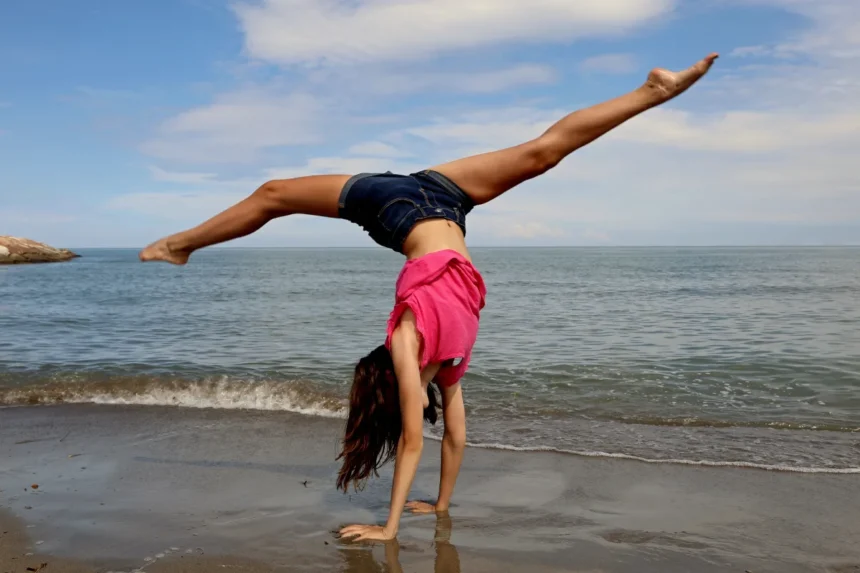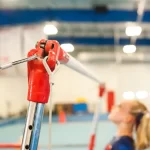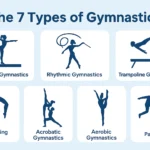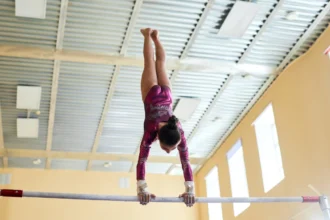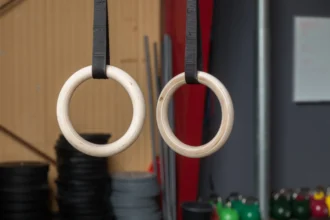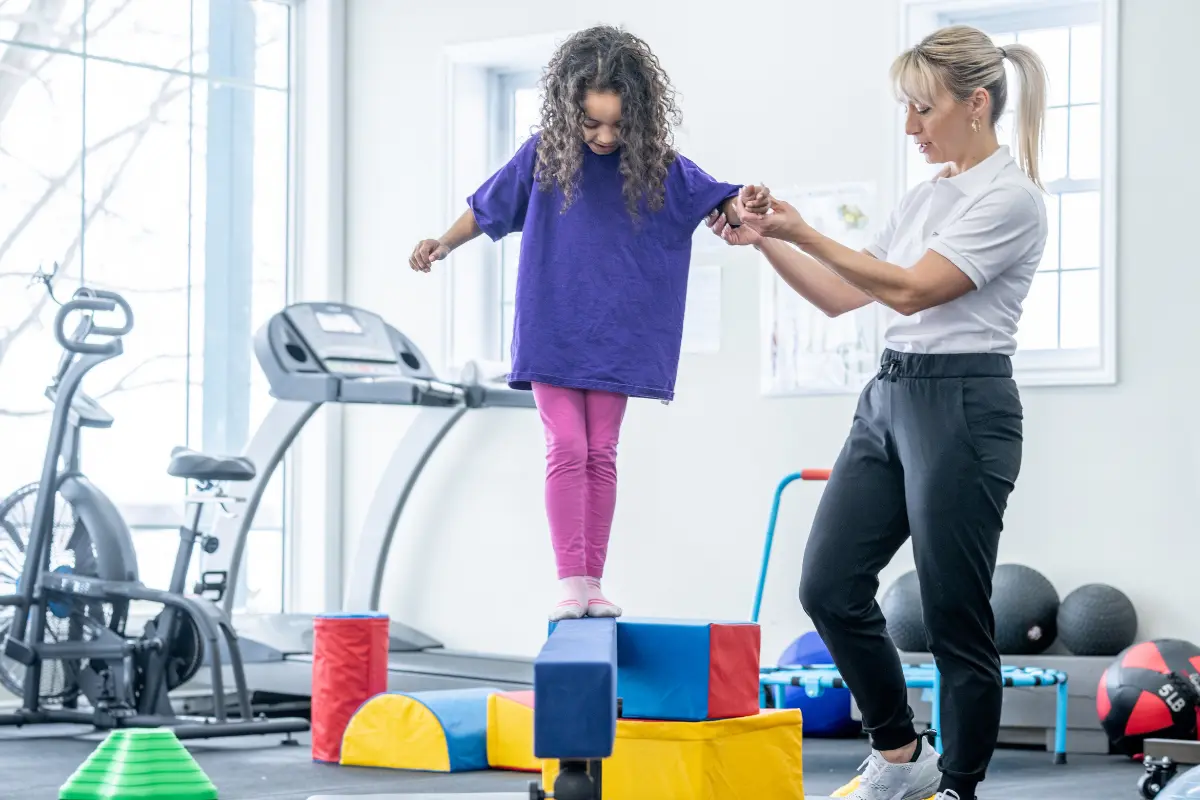A front walkover starts in a strong lunge, flows through a handstand, then arches backward like a bridge as your legs pass overhead. One foot lands first, followed by the second in a graceful split-leg motion, ending in a standing position.
At its core, a front walkover is a split-leg handstand that melts into a bridge and rises back up to standing. Every phase—your lunge, handstand line, arch, and stand-up—needs to feel connected and controlled, not rushed.
Prerequisites: Build the Right Foundation
Before jumping into walkover drills, it’s important to build a strong foundation. Skipping the basics doesn’t just slow your progress—it increases the risk of injury. Most coaches agree you should confidently check off these four skills first:
✅ 10-second freestanding handstand – Shows balance, body control, and core strength.
✅ Front splits on at least one leg – Flexibility here helps you hit clean shapes and avoid straining during the split-kick and bridge.
✅ Strong, stable bridge – Your shoulders should easily stack over your hands. If your bridge feels tight or collapses, work on it before moving on.
✅ Pain-free wrist weight-bearing – You’ll spend time upside down, so your wrists need to handle full bodyweight without pain.
Taking the time to master these will make your front walkover safer, cleaner, and much more fun to learn.
Ankle Dorsiflexion (Often Overlooked)
One hidden key to a great walkover is ankle dorsiflexion—the ability to flex your foot upward toward your shin. Why does this matter? Because when you rise from the bridge to standing, your front heel must land under your hip to keep your body stacked.
If your ankle mobility is limited, your heel lands too far behind you, causing your knees or lower back to compensate, putting strain on joints that aren’t meant to absorb that pressure.
How to improve it: Add ankle mobility drills to your warm-up, like wall ankle rocks or elevated toe lunges. Even a few minutes a day can improve your landing alignment and make your walkover feel more effortless.
Step-by-Step Technique — Front Walkover Made Simple
Learning a front walkover can feel intimidating, but breaking it into clear parts makes the skill easier to learn.
1 | Start with a Strong Lunge
Step your dominant foot forward so your front knee stacks directly over your heel. Your back leg should be straight, heel lifted, toe pointed. Keep your hips square—like headlights pointing forward.
Reach your arms up so your biceps hug your ears, and fingertips stretch to the sky. This position should feel strong and tight, like you’re loading a spring. Take a breath and lock it in.
2 | Kick Up with Power and Control
Begin to tip forward by reaching out with your fingertips. Let your chest stay tall and your head follow gently behind, not lead.
As your hands lower, kick your back leg up high and straight. Imagine one long line from hands to toes. The more aligned and extended you are, the easier it is to float into the next phase without jarring your wrists or shoulders.
3 | Pause in the Handstand
As your hips pass over your hands, tighten your core and squeeze your glutes. Push tall through your shoulders to stay stable. Try holding a split-handstand for just a second.
Even a tiny pause helps you build body control and feel that “stacked” alignment that makes the movement smoother over time.
4 | Lower Into a Bridge Gracefully
Let your front leg start to drop toward the floor while keeping your arms straight and eyes on your hands. This keeps your neck safe and your chest open.
Land your front foot just under your hip—not too far back. If your lower back feels tight or pinched, widen your leg split slightly or shift your shoulders further forward for relief.
5 | Stand Tall to Finish
Push into your front foot and drive your hips forward. Keep your head in line—don’t throw it back. Instead, lift your chest naturally with your arms still by your ears.
Once standing, either bring your back foot next to the front or settle into a clean lunge. Lower your arms with control, smile, and hold your finish.
Quick mantra: Load tall, kick high, pause tight, land long, rise hip-first. Memorize that, and every rep gets smoother.
Common Mistakes and How to Fix Them
| Mistake | Why It Happens | How to Fix It |
|---|---|---|
| Head drops too early | Gymnast wants to “spot the floor.” | Drill fingertip-led bridges on a wall to train eye-hand connection. |
| Bent knees mid-air | Hamstring tightness or fear of over-splitting. | Do dynamic hamstring kicks and needle-kick splits on panel mats. |
| Bridge collapses, bent arms | Weak shoulders or lack of core support. | Practice bridge rocks and handstand shoulder taps; cue “push tall through armpits.” |
| Second foot slams down | Hips not fully open or timing is off. | Use a low octagon under the bridge to slow the descent and teach leg control. |
| Twisting off-line | Uneven leg drive or misaligned hands. | Place a tape line on the mat; hands straddle it, feet land centered. |
Progressive Drills That Close the Gap
These drills help bridge the space between basic flexibility and a full front walkover. Work through them in order to build control, timing, and confidence.
1. Handstand to Bridge on a Wedge
What it trains: Smooth entry and safe shoulder opening.
How to do it: Kick into a handstand at the top of a wedge mat, then slowly arch into a bridge down the slope.
Why it works: The incline gives you more time and space to feel the transition while encouraging proper shoulder and back extension.
2. Split-Handstand Holds (3 Seconds)
What it trains: Pause control and split shape.
How to do it: From a handstand, gently open your legs into a front-back split and hold for 3 seconds before bringing them back together.
Why it works: Helps you practice holding a clean, balanced split in the air—something that happens naturally in the middle of a walkover.
3. Bridge Kick-Over with Raised Feet
What it trains: Strength and confidence in the kick-over phase.
How to do it: Lie back into a bridge with your feet on a 30 cm block, then kick over. As you improve, use a lower block until you can do it from the floor.
Why it works: Elevating the feet makes kicking over easier by changing the angle and reducing strain. It’s a great strength-building progression.
4. Tick-Tocks on a Beam Line
What it trains: Balance, shoulder push, and rhythm.
How to do it: On a floor line or low beam, rock from a handstand into a bridge, then reverse it back to handstand.
Why it works: Though challenging, this drill improves body awareness, mid-air control, and shoulder power—key ingredients for a seamless walkover.
Bringing It All Together
When everything clicks—flexible shoulders, a strong core, smooth timing—the front walkover becomes more than a checklist. It becomes one fluid, satisfying motion. That signature “swoosh” comes from repetition, not rush.
Aim for two focused training sessions per week, and give yourself six to eight weeks before expecting big changes. Progress takes time, but with consistency, you’ll get there—and you’ll look amazing doing it.
